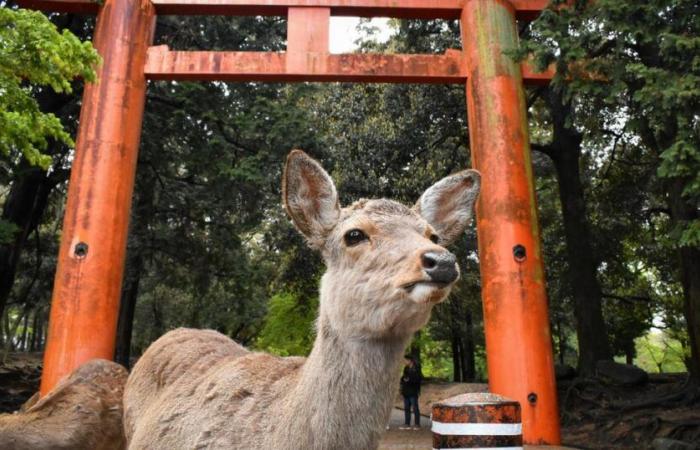Since September, the endearing deer for which this Japanese city is famous have become more aggressive towards visitors. To the point of encouraging the authorities to take measures.
So what happened to the endearing mascots of the city of Nara? For several months, the free-roaming deer that made Japan's former capital famous seem to have a serious grudge against tourists. According to The Japan Times , 35 visitors were bitten in September alone, compared to only five last year during the same period. Ten of them had to be taken to hospital, one of them for a significant hemorrhage in the thigh. The prefecture, which describes the phenomenon as “unusual”, explains it in part by the exponential increase in the number of males among the thousand deer which roam freely in the Nara park. To limit the extent of injuries, the authorities have decided to intensify the campaign to dehorn park animals since August. Without much success at the moment.
How to explain such rage? According to the Kansai city tourism office, the potential aggressiveness of these wild animals is not new. The risk is further increased between September and November, with autumn marking the mating season for these large animals. It's a bad name! For deer, it is mainly that of bellowing, a warlike song if ever there was one, and clashes between males. “They have antlers for a specific reason: to fight against their possible competitors. It is important that visitors understand this and know how to properly interact with them during this time,” we warn. But if attacks are on the rise, “It’s mainly because the number of tourists continues to grow.” However, these ever-increasing numbers of visitors do not always know how to behave with animals which, it is insisted, “are not pets but wild animals”.
Crackers and nothing else
Nara Tourist Office
Incidents would occur in particular when the individual risks touching the deer after giving it food. “The people of Nara don’t try to touch them”reminds the tourist office. Feeding them is allowed on one condition: being satisfied with rice crackers (senbei) sold on site to benefit the Nara Deer Preservation Foundation. But some tourists ignore this regulation, stuffing the animals with bread, harmful to their health, sometimes thrown directly from the window of their car, at the risk of creating traffic accidents. Others leave empty food bags lying around – there are no trash cans in the park – with sometimes dramatic consequences. In 2019, nine deer were found dead in Nara with up to four kilos of plastic in their stomachs.
To educate travelers, the tourist office and the prefecture have issued a series of rules for visitors. Some seem self-evident: don't hit deer, don't kick them, don't chase them, and don't ride them. Others are more subtle: do not approach fawns born in spring so as not to attract the wrath of their mother. “Visitors are also advised not to walk their dogs in the park as this causes extreme stress for the animals.” Posters at the station and on buses, signs in Japanese, English, Chinese and Korean, videos on social networks and on YouTube: it's time for education.
Good manners
Nara Tourist Office
It must be said that the deer that magnify the landscapes of Nara, the Sika deer, are not animals like any other for the Japanese. Considered “natural treasures”, they are seen as messengers of the divinities. Killing one of them was a capital crime until the 17th century. Things have changed somewhat: today they are regularly in the sights of the authorities who accuse them of damaging neighboring crops. Felling campaigns are taking place, not in the park, but in the surrounding areas of Nara. And the health crisis hasn't helped anything.
Left abandoned, they were pushed to look for food themselves in the woods, causing damage even to some shops. Let us add that the deer population continues to increase in Nara. In 1955, during the first census, there were only 378. Today there are 1200. That is certainly many more messengers of the gods, but also much more damage…
In video, an American tourist arrested in Japan for defacing a shrine
”
data-script=”https://static.lefigaro.fr/widget-video/short-ttl/video/index.js”
>






